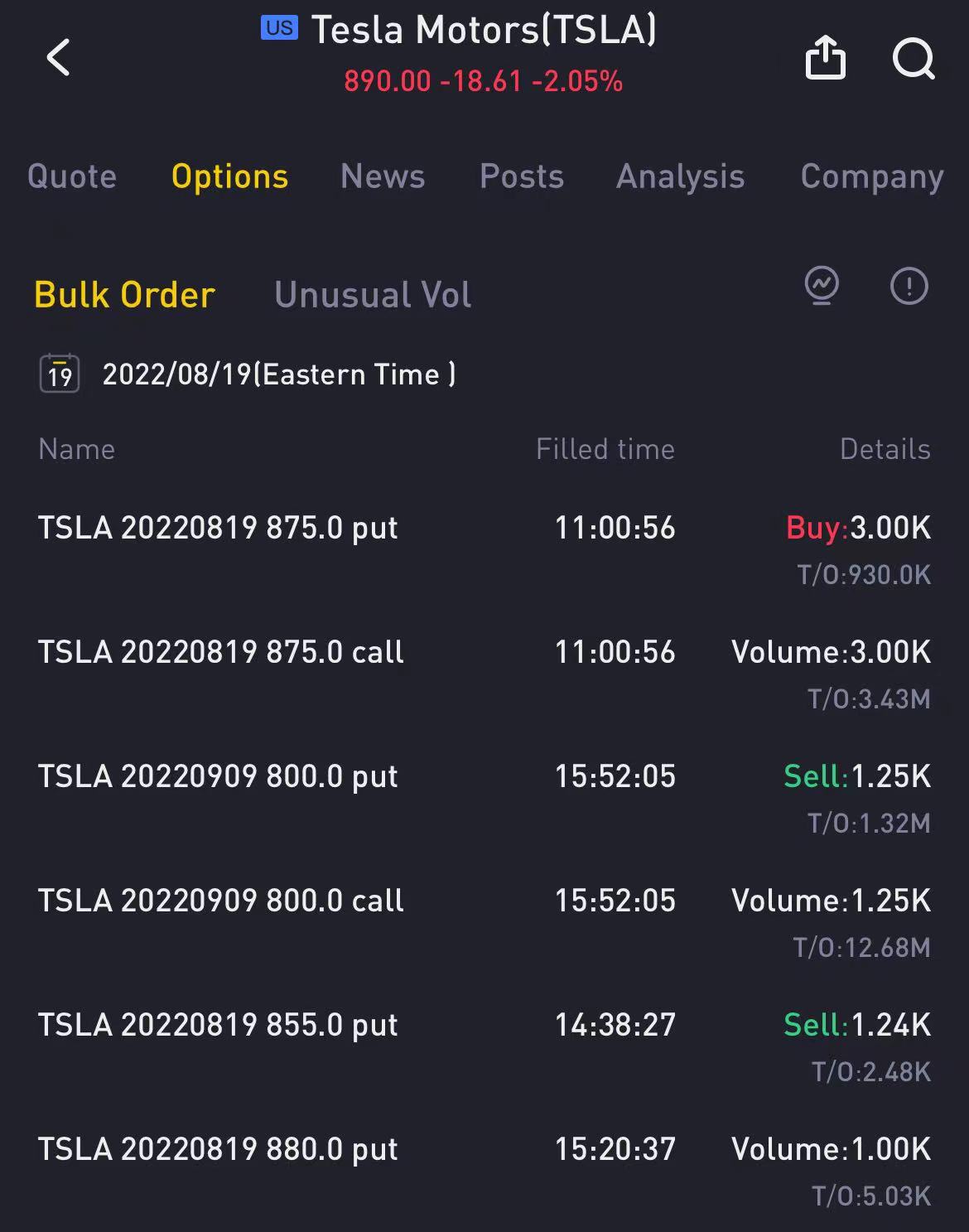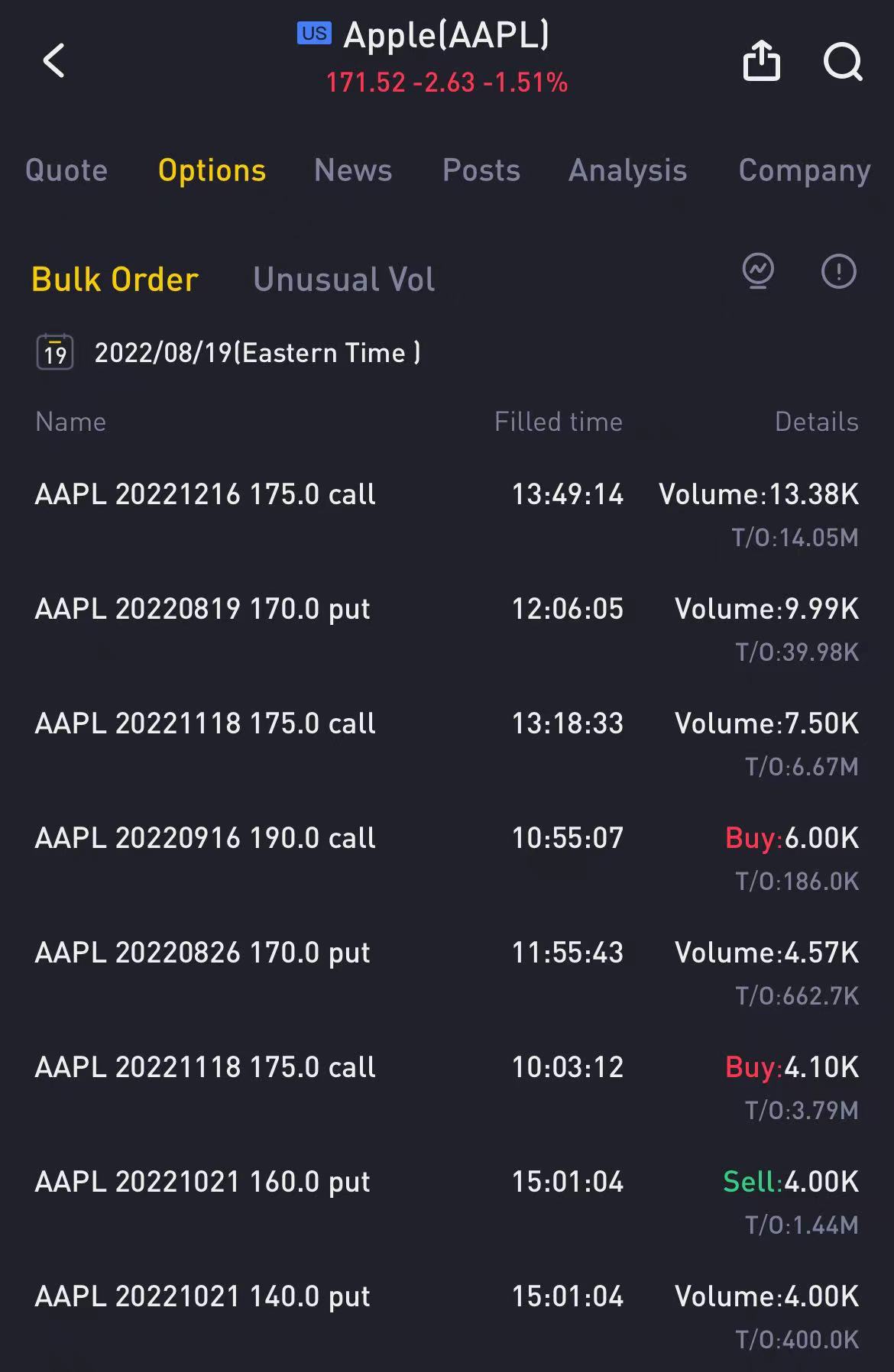Market Thoughts for September
More than $2 trillion of options were settled on Friday, August 19, when monthly options expired. In fact, last week many institutions began processing options that expired on August 19th.
So today combined with Friday's processing results to talk about the institution for the future this month's trend expectation. The best examples are Tesla and Apple.
Tesla$Tesla Motors(TSLA)$ closed Friday with a set of orders in the tens of millions:
$TSLA 20220909 800.0 CALL$ & $TSLA 20220909 800.0 PUT$
As you can see, this is a typical straddle option strategy. Traders buy both a call and a put with a strike price of 800 due Sept. 9, which can start to make money if the stock rises more than $910 or falls more than $690.
Because call is in-price, the trader prefers the bullish direction, which means he thinks Tesla can rise to $910 by September 9th.

The problem is that this trader's call is extremely conservative. Based on Friday's closing price, 890 would only need to rise 2% to 910, which objectively shows that the market environment for the split is not too enthusiastic, but not to the extent of a decline. So I think Tesla's recent Sell put is very suitable: $TSLA 20220826 800.0 PUT$
Tesla's bulk order is evidence that the market has been relatively flat recently, and Apple's bulk order is even more telling when it's further back in time.
On Friday, Apple alone closed a multimillion-dollar call: $AAPL 20221216 175.0 CALL$
The trader chose a call with a strike price of 175 due December 16 for a total volume of $14.05 million. Apple shares were trading at $172, so this is a shallow forward call. Traders expect Apple to remain bullish in the longer term.

- The same strategy that was out-of-the-money in July is now at-the-money or in-the-money.
- In the same strategy, the maturity date selected in July is one month from now, and the maturity date selected now is November or December.
If it's a straddle strategy, July saw a lot of at-the-money straddles, and now straddles are more likely to put calls in the money and date at least two months out.
If it is a one-sided call, you can find a more aggressive option out-of-price call for the July call order, and the expiration date is one month away. Now call orders are more likely to be flat price, and the maturity date is selected after November.
For now, the overall strategy hasn't changed much, it's still bullish, but the market thinks the pace will slow down, meaning there will be more pullbacks like this one. The back-and-forth reduces volatility, and it takes longer to get to a certain point.
Therefore, the layout of these large option orders can be interpreted as either a low volatility in the next two or three months, or an unconfident short-term return in the next month and a need to give the market longer time.
However, in terms of the recent disk looks a little bit of disagreement, the point of disagreement is how low will fall. The difference is that some traders choose to go long on volatility and buy near-term at-the-money options (PUT), while others choose to go long on volatility and ignore near-term volatility and buy long on CALL but lower their expectations with the strike price.
My overall view is to maintain the weight of the Sell put strategy. Shorting the $Cboe Volatility Index(VIX)$ is also a good bet for the current pullback, as volatility is always on the move up and back down.
Disclaimer: Investing carries risk. This is not financial advice. The above content should not be regarded as an offer, recommendation, or solicitation on acquiring or disposing of any financial products, any associated discussions, comments, or posts by author or other users should not be considered as such either. It is solely for general information purpose only, which does not consider your own investment objectives, financial situations or needs. TTM assumes no responsibility or warranty for the accuracy and completeness of the information, investors should do their own research and may seek professional advice before investing.

Good analogy
T